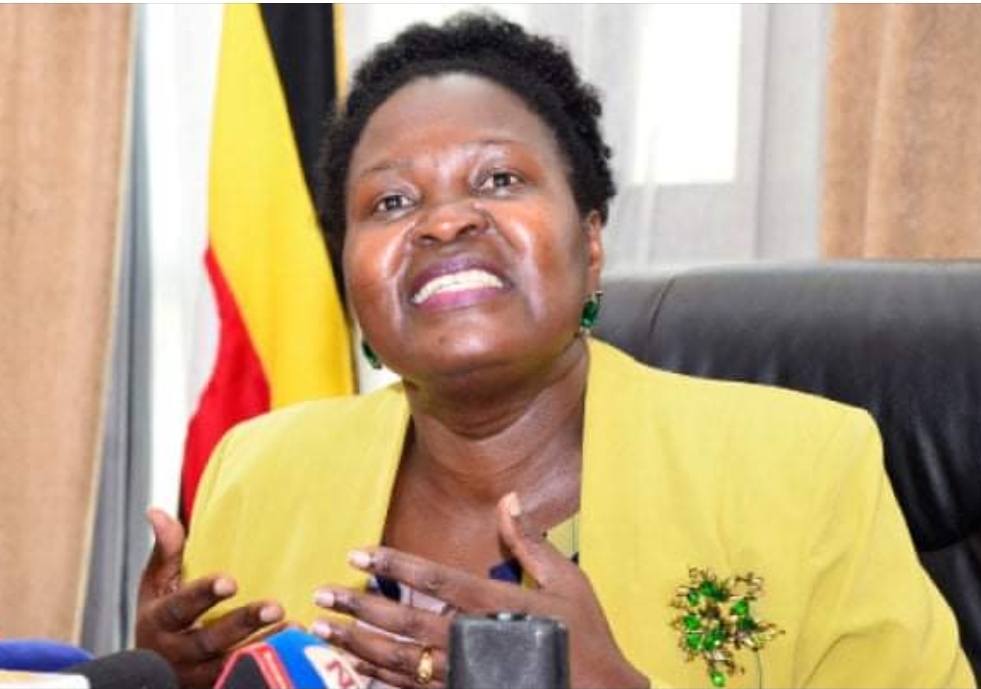
Of the targeted annual connections of 300,000 connections under Electricity Connections Policy (ECP), to date 299,843 have been realized as of the end of June 2021, the Minister for Energy and Mineral Development Ruth Nankabirwa has said.
She said this while addressing journalists on Thursday 29th July 2021. The Minister said a total of 1,502 new connections were registered between April and June 2021.
“Government is implementing the Electricity Connections Policy (2018 -2027) whose goal is to achieve 60% electricity access to grid electricity in Uganda by 2027. The Government pays the cost of electricity connection materials, enabling citizens that are ready for electricity consumption to access free connection materials,” said Nankabirwa.
According to her, the annual budget required to implement ECP is estimated to be sh200b to be contributed by Government and Development Partners. She added that by December 2020, over 290,000 connections had been implemented under the ECP.
“It ought to be noted that towards the end of 2020, the policy was suspended due to the overwhelming demand yet funds were limited. When the Government accumulated arrears of sh103.408 billion, the Service Providers were unwilling to make more new connections before the Government settled the arrears.”
Meanwhile requests for new consumer connections continued accumulating and by 7th December 2020, there was a backlog of 200,500 applications for new electricity connections. The ECP was however resumed in March 2021 and connections have since resumed, with a dual connection system where customers with the ability to pay for their connections can pay in three days without waiting as Government mobilizes additional resources for the ECP to clear the backlog.
Cabinet approved the resumption of ECP considering that Government had procured 87,500 no-pole connection materials worth USD 11,550,000 utilizing funds from the ongoing African Development Bank Access project while procurement of 62,400 no-pole connection materials from the same.
Power installed generation capacity
Minister Nankabirwa said thetotal Installed Generation Capacity has grown from 60 MW in 1986, to 1,268.9MW as of June 2021.
Power Generation is diversified across five (5) different sources including; Hydro, Solar Energy, Thermal, Cogeneration and Biomass.
“The increase in capacity over the past two years followed the commissioning of 183 MW Isimba hydropower project on 21 March 2019, Achwa II (42 MW) hydropower plant 30th September 2019, Ndugutu hydro power plant 1st October 2019, Siti II (16.5 MW), Kyambura(7.6MW) and Sindila hydropower plant in April 2019 and commissioning of Nyamagasani II small HPP in February 2021 with most of the small Hydro power plants supported by the Development Partners through the GETFIT program.”
Installed generation capacity to increase to over 1900MW
The total installed generation capacity is expected to increase to over 1900MW by mid – 2022, following the commissioning of 600MW Karuma hydropower plant and other small hydro plants under construction, (Nyamagasani 1, Achwa 1, Kakaka, and Kikagati).
Minister Nankabirwa said the transmission network totals a length of 3,100.5km consisting of 220kV, 132kV and 66kV transmission lines and 25 primary Substations with a total capacity of 2869.5 MVA across the country by the end of June 2021.
Strategies to achieve affordable tariffs
She said over the recent years, the Government has implemented various measures to continuously reduce the end user tariffs for all Electricity consumers. Some of the implemented and planned measures, according to Nankabirwa include debt refinancing of Bujagali Hydro Power Plant, distribution efficiency and implementation of extra-large customer category.
